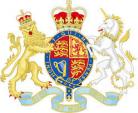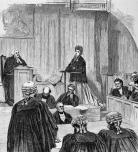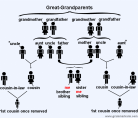The Progression of Women's Rights
Created by Katherine Muck on Fri, 02/01/2019 - 12:59
Part of Group:
Acts in chronological order that have dramatically changed women's lives.
Timeline
Chronological table
| Date | Event | Created by | Associated Places | |
|---|---|---|---|---|
| 1700 to 1857 |
Divorce through a Private Act of ParliamentBetween 1700 and 1857, the only way to receive a divorce which allowed for re-marriage was through a Private Act of Parliment. During this time, there were only 314 Acts. |
Katherine Muck | ||
| 1753 |
Marriage Act 1753The Marriage Act of 1753 was also called "An Act for the Better Preventing of Clandestine Marriage" and Lord Hardwicke's Marriage Act. This required weddings to take place in an approved church or chapel. This act also set aside common law marriages. |
Katherine Muck | ||
| 1836 |
Marriage Act 1836The Marriage Act 1836 legalized civil marriages in England and Wales. This meant that religious nonconformists and Catholics could marry in legally registered buildings or their place of worship. |
Katherine Muck | ||
| 1857 |
Matrimonial Causes Act 1857The Matrimonial Causes Act 1857 was a major reform on divorce. This Act allowed ordinary people to divorce since couples could receive a divorce from civil courts instead of from an Act of Parliament. Men could divorce on the grounds of adultery but women had to prove additional faults (such as cruelty) along with adultery. |
Katherine Muck | ||
| 1908 |
Punishment of Incest Act 1908This act defined incest as illegal. Incest was defined as sexual relations between a person and their grandchild, child, sibling (including half-siblings), or parents. |
Katherine Muck | ||
| 1926 |
Legitimacy Act of 1926This act allowed children born outside of marriage to be legitimized (following a marriage of the parents). Neither parent could be married to a third party at the time of birth. This act was modified in 1959 extending it to parents who were married to a third party at the time of birth. |
Katherine Muck | ||
| 1926 |
Adoption of Children Act 1926This act made adoption in England and Wales a legal process. Before this act, adoptive parents had no rights over their child, the rights remained with the biological parents. Adopted children could also receive a new birth certificate including the names of the adopted parents. |
Katherine Muck | ||
| 1969 |
Divorce Reform Act 1969This act made divorce easier. Couples could divorce if both parties wanted one and were separated for two years. If one party wanted a divorce, they needed to be separated for five years. Also, “Irretrievable Breakdown” became a ground for divorce. This meant neither party had to prove a fault with their partner. |
Katherine Muck |








